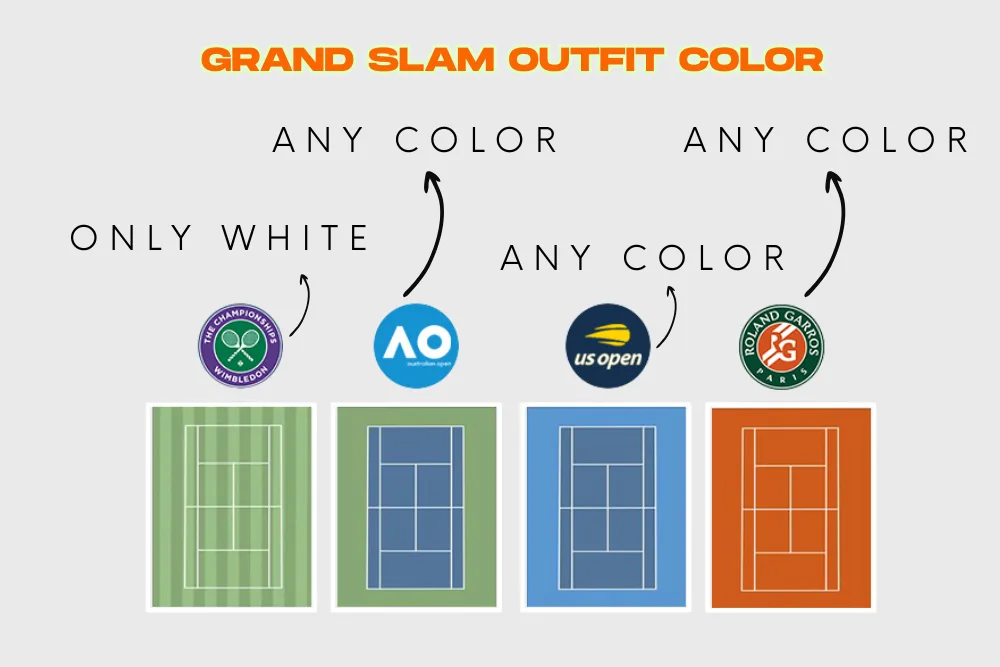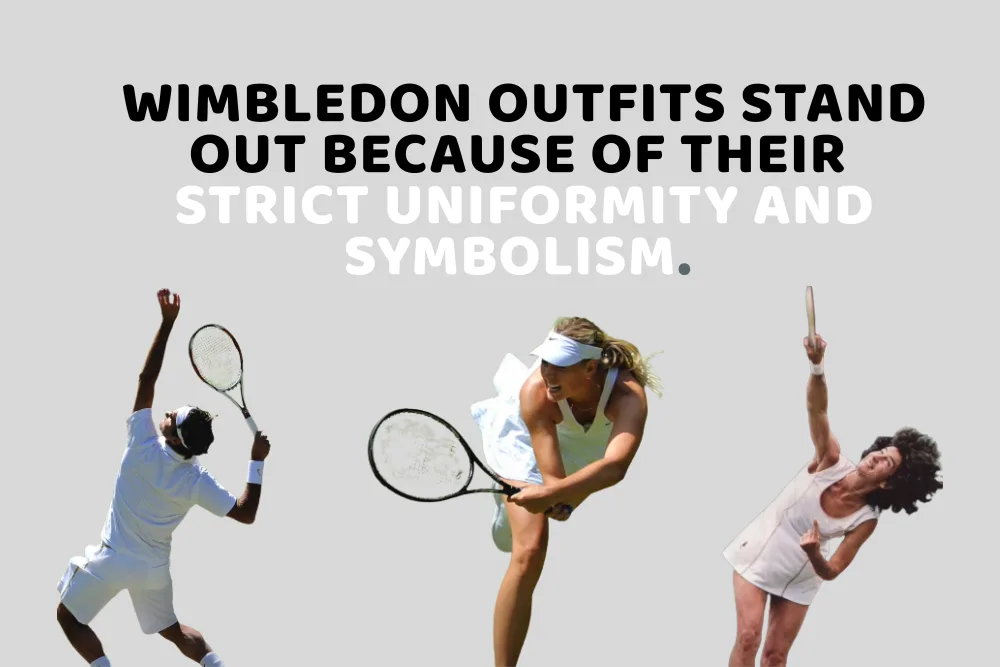Now Reading: What Makes Outfits for Wimbledon Stand Out?
-
01
What Makes Outfits for Wimbledon Stand Out?
What Makes Outfits for Wimbledon Stand Out?

The sight of lush green courts, strawberries and cream, and a sea of white clothing signals one thing—Wimbledon is here. But beyond the fierce rallies and royal audience lies something even more iconic: the fashion. Outfits for Wimbledon aren’t just about style—they’re about legacy, discipline, and a strict code of tradition that sets this Grand Slam apart from all others.
A Grand Slam Like No Other
The Wimbledon Championships, held at the All England Lawn Tennis and Croquet Club in London, are the oldest and most prestigious of four Grand Slam tournaments. Unlike the Australian, French, and U.S. Opens, Wimbledon follows an unwavering all-white dress code that applies to both players and, in more subtle ways, to spectators.

This unique rule has made outfits for Wimbledon some of the most recognized in sports fashion history.
The History Behind the White Dress Code
The all-white clothing rule traces back to the 1880s, when tennis was primarily a sport for the English upper class. During that time, sweat stains were seen as vulgar and improper—especially for women. White clothing helped mask perspiration better than darker or colored fabrics, making it a logical but socially charged choice.
Since then, Wimbledon has become a guardian of tradition. Once the dress code was officially written into the tournament rules, it became a defining feature—so deeply entrenched that even modern tennis icons have faced criticism for slight deviations.
How Strict Is the Rule?
Extremely. In fact, outfits for Wimbledon follow some of the most stringent clothing policies in professional sports. The guidelines go far beyond just wearing white:
-
Clothing must be “almost entirely white”. Off-white and cream are not acceptable.
-
A single trim of color is allowed, no wider than 1 centimeter.
-
Undergarments (even those visible through perspiration) must be pure white.
-
Shoes, laces, and socks must also be white.
-
Logos or patterns that deviate from white are banned.
-
Even the backs of shirts and dresses must be completely white.
Players like Roger Federer, Venus Williams, and Martina Navratilova have all been told to change pieces of their attire mid-tournament for minor infractions.
Celebrity Clashes with the Code
Tennis royalty and fashion icons haven’t been immune to Wimbledon’s rules. In 2013, Federer’s orange-soled shoes caused a stir. In 2017, Venus Williams had to change her pink bra during a match. Even style legend Andre Agassi, known for his rebellious wardrobe, famously resisted playing at Wimbledon for years due to the code.
These moments underscore just how rigid and serious Wimbledon remains about its dress policies—even in the face of modern style evolution.
Outfits for Wimbledon: The Spectator Side
While there’s no formal dress code for spectators, outfits for Wimbledon attendees often follow an unspoken code of smart casual—especially for those attending matches at Centre Court or the Royal Box.
Spectators are advised to:
-
Dress elegantly but comfortably
-
Avoid large logos or slogans (ambush marketing is banned)
-
Choose summer-smart accessories like Panama hats and sunglasses
-
Dress up significantly for Royal Box invitations (jackets and ties required)
Smart style is encouraged not only out of respect but to mirror the aesthetic that Wimbledon has maintained for over a century.
Why Wimbledon Outfits Stand Out from Other Sports
Wimbledon outfits shine through tradition, not flashy branding. The lack of advertising, monochromatic aesthetic, and adherence to Victorian elegance creates a timeless visual identity that few other tournaments can match.

Where other sporting events lean into modern trends and bold customization, Wimbledon insists on class and consistency—a move that makes it not just a tennis tournament, but a cultural institution.
Wimbledon Fashion in Modern Times
Despite complaints about its rigidity, the white rule has become an iconic part of the tournament. Fashion houses and sportswear brands now design entire lines around the outfits for Wimbledon aesthetic. From elegant tennis dresses to minimalist headbands and crisp polos, Wimbledon whites have become synonymous with tennis style itself.
FAQ: Outfits for Wimbledon
Q1: Why does Wimbledon require players to wear white?
A: The rule dates back to the 1880s to mask sweat stains, which were considered improper. Today, it continues as part of Wimbledon’s commitment to tradition.
Q2: Can players wear off-white or cream?
A: No. Wimbledon specifies “white” does not include off-white or cream. Only pure white is allowed.
Q3: Are there restrictions on accessories and undergarments?
A: Yes. All visible clothing—including socks, shoes, laces, and undergarments—must be white. Colored logos and trims must not exceed 1 cm in width.
Q4: Do spectators have a dress code?
A: While not mandatory, spectators—especially those in Centre Court or Royal Box—are encouraged to dress smartly. Political slogans and promotional attire are banned.
Q5: Have any players ever broken the dress code?
A: Yes, many high-profile players have. Federer, Venus Williams, and Agassi are just a few who have faced restrictions or reprimands for violating the white dress policy.
Final Note
Whether you view it as outdated or elegant, there’s no denying that outfits for Wimbledon uniquely stand out. The all-white rule is more than just a dress code—it’s a statement. It’s about heritage, discipline, and upholding a century-old image of tennis as a gentleman’s (and lady’s) game.
Find more sports news from Search Ethics.
Dony Garvasis is the founder of Search Ethics, a platform dedicated to transparency, authenticity, and ethical digital practices. With over six years of experience in SEO and digital marketing, I provide expert content on automobiles, Artificial intelligence, technology, gadgets, science, tips, tutorials and much more. My mission is simple: Ethical Search, Genuine Results! I will make sure people everywhere get trustworthy and helpful information.










